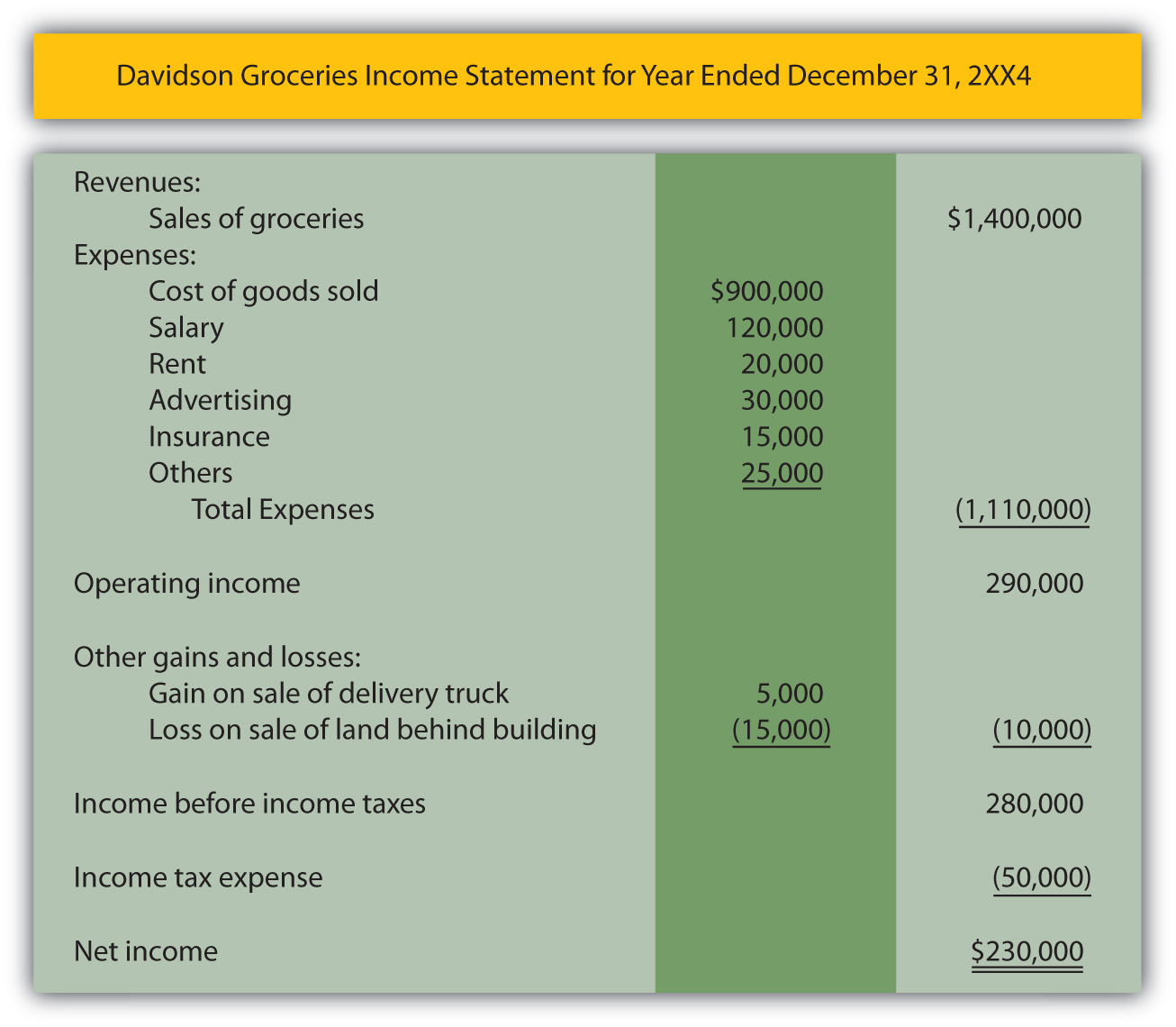

Finance
How Does Companies Use Capital Structure
Modified: December 30, 2023
Discover how companies strategically utilize capital structure to optimize their finances. Explore the role of finance in achieving business goals and maximizing shareholder value.
(Many of the links in this article redirect to a specific reviewed product. Your purchase of these products through affiliate links helps to generate commission for LiveWell, at no extra cost. Learn more)
Table of Contents
Introduction
Welcome to the world of finance, where companies make strategic decisions to optimize their capital structure. The concept of capital structure plays a crucial role in determining how companies finance their operations and investments. A well-designed capital structure can contribute to the financial stability and growth potential of a business, while an inefficient one can lead to financial constraints and increased risk.
Capital structure refers to the way a company funds its activities by utilizing a combination of debt and equity. Debt represents borrowed funds that need to be repaid over time, usually with interest. On the other hand, equity represents ownership in the company, held by its shareholders. By carefully balancing debt and equity, companies strive to achieve an optimal capital structure that supports their long-term goals.
The importance of capital structure lies in its ability to influence various aspects of a company’s financial performance. The decisions made regarding capital structure can impact the cost of capital, profitability, risk level, and overall value of the business. Understanding and effectively managing capital structure is essential for companies to make informed financing decisions and maximize shareholder value.
Several factors influence a company’s capital structure decisions. These factors include the company’s industry, size, growth prospects, profitability, tax considerations, asset base, and risk tolerance. Additionally, macroeconomic factors such as interest rates, availability of credit, and market conditions also influence capital structure choices.
There are various types of capital structures employed by companies, such as conservative, aggressive, and moderate. A conservative capital structure emphasizes a higher proportion of equity financing to minimize financial risk. Conversely, an aggressive capital structure relies more on debt financing to leverage the company’s operations and generate higher returns. A moderate capital structure strikes a balance between debt and equity to manage risk and optimize financial flexibility.
The decision to finance a company’s activities through debt or equity is a fundamental choice that impacts the capital structure. Debt financing involves borrowing money from external sources such as banks or issuing bonds to investors. It typically comes with contractual obligations to repay the principal amount and interest. Equity financing, on the other hand, involves raising capital by selling shares of ownership in the company to investors.
Both debt and equity financing options have their advantages and disadvantages. Debt financing allows companies to leverage their operations and benefit from tax deductibility on interest payments. However, it also increases financial risk and can lead to higher costs of borrowing. Equity financing provides companies with additional capital without incurring debt, but it dilutes ownership and may result in the loss of control of the business.
The choice between debt and equity financing is influenced by various factors. Factors favoring debt financing include the company’s creditworthiness, interest rates, and existing debt obligations. Factors favoring equity financing include the company’s growth potential, profitability, and investor appetite for ownership in the business.
Definition of Capital Structure
Capital structure refers to the combination of debt and equity that a company utilizes to finance its operations and investments. It represents the way a company sources and manages its financial resources to support its activities and achieve its goals. By strategically determining the mix of debt and equity, companies aim to strike a balance between risk and return.
The capital structure of a company is typically presented in the form of a capitalization table, which outlines the proportions of different types of financing. Debt is represented by loans, bonds, or other forms of borrowing that must be repaid over time, usually with interest. Equity, on the other hand, represents ownership in the company, held by its shareholders.
It is important to note that capital structure does not refer to the total value of a company. Rather, it focuses on how that value is divided between debt and equity. For instance, a company with a capital structure composed of 60% debt and 40% equity means that 60% of its financing comes from borrowed funds, while 40% represents ownership stake held by shareholders.
The choice of capital structure is influenced by various factors, including the company’s risk appetite, industry norms, growth prospects, tax considerations, and financial stability. Employing an optimal capital structure is crucial as it can impact the company’s cost of capital, profitability, risk profile, and ability to attract investors.
While there is no one-size-fits-all approach to determining the ideal capital structure, companies aim to strike a balance that aligns with their specific needs and goals. This involves analyzing the costs and benefits associated with various financing options and finding the right mix that maximizes shareholder value.
It is worth mentioning that capital structure decisions are not set in stone and can evolve over time. As a company grows or faces changes in its business environment, it may need to reassess its capital structure to adapt to new circumstances. This could involve refinancing existing debt, issuing new equity, or adjusting the proportion of debt and equity to meet evolving financial needs.
In summary, capital structure refers to the mix of debt and equity financing utilized by a company to fund its activities. This crucial financial decision impacts a company’s risk profile, profitability, and overall financial health. By effectively managing and optimizing capital structure, companies aim to secure the necessary funds while balancing financial risk and maximizing shareholder value.
Importance of Capital Structure
The capital structure of a company plays a vital role in determining its financial health and performance. It has a significant impact on various aspects of the business, ranging from the cost of capital to risk management and shareholder value. Understanding the importance of capital structure is essential for companies to make informed financing decisions and achieve long-term success.
One of the key reasons why capital structure is important is its influence on the cost of capital. The cost of capital refers to the overall expense a company incurs to raise funds for its operations. A well-designed capital structure can help companies optimize their cost of capital by balancing the lower cost of debt with the higher return potential of equity. This enables businesses to access capital at an efficient rate, reducing their overall financing costs and increasing profitability.
Furthermore, capital structure decisions have a direct impact on the risk profile of a company. Different types of financing, such as debt and equity, carry varying levels of risk. Debt financing, for example, introduces financial obligations and interest payments that companies must fulfill. Failure to meet these obligations can result in financial distress or even bankruptcy. On the other hand, equity financing dilutes ownership but eliminates the obligation to repay principal and interest. By striking the right balance between debt and equity, companies can manage their risk exposure effectively.
The capital structure also affects the financial flexibility of a company. Maintaining a healthy mix of debt and equity provides businesses with the flexibility to respond to unforeseen circumstances, seize growth opportunities, and make strategic investments. Having access to diverse sources of funding enhances a company’s ability to adapt to changes in the market and supports its long-term sustainability.
Another crucial aspect of capital structure is its impact on shareholder value. Investors and shareholders are interested in the value generated by the company over time. A well-structured capitalization can maximize shareholder value by optimizing the returns generated from different financing sources. By finding the right balance, companies can attract investors and drive stock performance, ultimately creating value for their shareholders.
Furthermore, capital structure decisions are closely linked to tax considerations. Interest payments on debt are often tax-deductible, which can provide a significant advantage for companies utilizing debt financing. This tax shield reduces the overall tax liability of the company, increasing its after-tax profitability.
In summary, the importance of capital structure lies in its ability to impact the cost of capital, risk management, financial flexibility, shareholder value, and tax efficiency. By carefully designing and maintaining an optimal capital structure, companies can enhance their financial position, adapt to market changes, and create long-term value for their stakeholders.
Factors Affecting Capital Structure
The capital structure decisions of a company are influenced by a variety of factors. These factors shape the financing choices made by businesses and play a crucial role in determining the optimal mix of debt and equity. By considering these factors, companies can align their capital structure with their financial goals and maximize their overall performance.
1. Industry Norms: Different industries have different capital structure norms based on their risk profiles, leverage requirements, and growth prospects. Companies often benchmark their capital structure against industry peers to ensure competitiveness and financial stability.
2. Business Size and Growth Potential: The size and growth potential of a company can influence its capital structure decisions. Small and medium-sized enterprises (SMEs) may rely more on equity financing due to limited access to debt markets, while larger companies may have more options for debt financing.
3. Profitability: The profitability of a company impacts its ability to generate internal cash flows to meet debt obligations. Highly profitable companies may have greater flexibility to handle debt and may prefer higher leverage ratios.
4. Risk Tolerance: Different companies have different risk tolerances based on their industry, management preferences, and financial stability. Risk-averse companies may lean towards conservative capital structures with lower debt ratios to minimize financial risk.
5. Tax Considerations: The tax environment in which a company operates can influence capital structure decisions. The interest payments on debt are typically tax-deductible, making debt financing more attractive for companies seeking tax benefits.
6. Access to Capital Markets: Companies with easy access to various sources of capital, such as debt markets or equity investors, may have more flexibility in designing their capital structure. Companies lacking access to external financing options may rely more on internal funds or conservative debt ratios.
7. Cyclical Nature of the Business: Companies operating in cyclical industries may experience fluctuations in cash flows and profitability. Such companies may opt for more conservative capital structures to withstand economic downturns and ensure financial stability.
8. Asset Base: The nature and value of a company’s assets can impact its capital structure decisions. Companies with substantial tangible assets may find it easier to secure debt financing backed by those assets, while companies with intangible assets may rely more on equity financing.
9. Governance and Ownership Structure: Corporate governance practices and ownership structure can also influence capital structure choices. Companies with dispersed ownership may lean towards debt financing to retain control, while companies with concentrated ownership may opt for equity financing to dilute ownership.
10. Market Conditions: External market conditions, such as interest rates, the availability of credit, and investor sentiment, can impact capital structure decisions. Companies may adjust their capital structure based on prevailing market conditions to optimize financing costs.
It is essential for companies to consider these factors when making capital structure decisions. By analyzing these factors and aligning their capital structure with their specific circumstances, companies can optimize their financing choices and enhance their overall financial performance.
Types of Capital Structure
Companies have the flexibility to structure their capital in various ways, depending on their financial goals, risk appetite, and market conditions. The capital structure of a company can generally be classified into three main types: conservative, aggressive, and moderate.
1. Conservative Capital Structure: A conservative capital structure is characterized by a higher proportion of equity financing and a lower proportion of debt. Companies with conservative capital structures prioritize financial stability and prefer lower financial risk. By relying more on equity financing, these companies aim to reduce their debt obligations and interest expenses. Conservative capital structures are commonly found in mature industries with stable cash flows and lower growth prospects. Such industries include utilities, consumer staples, and healthcare.
2. Aggressive Capital Structure: An aggressive capital structure involves a higher proportion of debt financing and a lower proportion of equity. Companies with aggressive capital structures aim to leverage their operations to maximize returns and accelerate growth. By relying more on debt financing, these companies can access larger amounts of capital and generate higher potential profits. However, aggressive capital structures come with increased financial risk. Industries that tend to adopt aggressive capital structures include technology, telecommunications, and real estate, where higher growth potential and asset values are prevalent.
3. Moderate Capital Structure: A moderate capital structure strikes a balance between debt and equity financing. Companies with moderate capital structures aim to manage financial risk while seeking opportunities for growth. This type of capital structure allows companies to maintain a healthy debt-to-equity ratio, ensuring sufficient access to capital without excessive risk. Moderate capital structures are often found in industries that are moderately stable, with moderate growth prospects. Examples include manufacturing, retail, and professional services.
It is important to note that the classification of a company’s capital structure as conservative, aggressive, or moderate is not fixed and can vary based on factors such as industry norms, market conditions, and individual business circumstances. Additionally, a company’s capital structure may change over time as it adapts to evolving market conditions, business strategies, or financial needs.
When evaluating the appropriate capital structure for a company, it is crucial to consider factors such as industry dynamics, growth prospects, cash flow stability, and risk tolerance. By carefully selecting the type of capital structure that aligns with their goals and circumstances, companies can optimize their financing decisions and enhance their overall financial performance.
Debt vs. Equity Financing
When it comes to financing their activities, companies have two main options: debt and equity. Debt financing involves borrowing funds from external sources, such as banks, financial institutions, or bondholders, with the obligation to repay the borrowed amount along with interest. Equity financing, on the other hand, involves raising capital by selling ownership stakes in the company to investors.
Both debt and equity financing have their advantages and disadvantages, and companies must carefully consider their specific circumstances and financial goals before choosing the appropriate financing method.
- Debt Financing: Debt financing is a common method for raising capital. Companies obtain debt financing by issuing bonds or taking loans from banks or other financial institutions. Here are some key characteristics of debt financing:
- Interest Payments: When a company borrows funds, it agrees to make regular interest payments to the lender. These interest payments are tax-deductible, which can provide a financial advantage to the company.
- Principal Repayment: In addition to interest payments, companies must repay the principal amount borrowed over a specified period. The repayment terms and schedule are typically outlined in the loan agreement.
- Fixed Obligations: Debt financing introduces a fixed obligation for companies to make regular interest and principal payments. Failure to meet these obligations can result in penalties, damage the company’s credit rating, and affect its ability to borrow in the future.
- Leverage: Debt financing allows companies to leverage their operations, as they can use borrowed funds to amplify their returns. However, excessive debt can also increase financial risk, especially if the company’s ability to generate cash flow is compromised.
- Collateral Requirement: In some cases, lenders may require companies to provide collateral, such as assets, as security for the borrowed funds. This collateral offers protection to the lender in case of default.
- Equity Financing: Equity financing involves selling ownership stakes in the company to investors in exchange for capital. Here are some key characteristics of equity financing:
- Ownership Dilution: By issuing equity, companies dilute the ownership stakes of existing shareholders. This means that investors who purchase equity become partial owners of the company and have certain rights and claims on its assets and earnings.
- No Repayment Obligation: Unlike debt financing, equity financing does not involve a repayment obligation. Investors provide capital without the expectation of principal repayment or interest payments. Instead, they anticipate a return on their investment through dividends, capital appreciation, or future stock sales.
- Shared Profit and Control: Equity investors are entitled to a share of the company’s profits in the form of dividends or capital gains. Additionally, they may have the right to participate in significant decision-making processes through voting rights.
- Flexibility: Equity financing provides companies with more flexibility as it does not introduce fixed repayment obligations. This can be advantageous in uncertain business environments or during periods of low profitability.
- Market Perception and Pricing: The success of equity financing depends on market demand and investor perception of the company’s potential. Companies may need to adjust their pricing and terms to attract equity investors.
The choice between debt and equity financing depends on various factors, including the company’s financial position, growth prospects, risk tolerance, and the current market conditions. Some companies may prefer debt financing to enjoy the tax benefits and leverage opportunities, while others may opt for equity financing to avoid debt obligations and retain control.
In practice, many companies utilize a combination of debt and equity financing to achieve an optimal capital structure that balances risk, cost of capital, and financial flexibility.
Factors Influencing Debt Financing
When considering the financing options for a company, debt financing is a common choice that offers several advantages. However, the decision to utilize debt financing is influenced by a variety of factors that must be carefully evaluated. Understanding these factors helps companies determine if debt financing is the most appropriate option for their specific circumstances.
- Financial Stability: Lenders assess a company’s financial stability before providing debt financing. Factors such as a consistent track record of profitability, positive cash flow, and strong balance sheets can enhance a company’s ability to secure debt financing.
- Creditworthiness: A company’s creditworthiness plays a crucial role in obtaining debt financing. Lenders evaluate credit ratings, repayment history, and existing debt obligations to assess the risk associated with providing additional debt. A higher credit rating improves the company’s access to favorable financing terms.
- Assets and Collateral: Lenders often require collateral or security when offering debt financing. Companies with valuable assets, such as real estate or machinery, can use them as collateral to secure loans and lower the interest rates on the debt. Having tangible assets increases the confidence of lenders in recovering their funds in case of default.
- Interest Rates: The prevailing interest rates in the market greatly influence the decision to opt for debt financing. Lower interest rates make debt financing more attractive as companies can borrow funds at a lower cost, reducing their overall interest expenses.
- Tax Benefits: Debt financing offers tax advantages since interest payments on debt are generally tax-deductible. This tax shield can reduce a company’s tax liability and enhance its after-tax profitability. The availability of tax benefits makes debt financing an attractive option for companies seeking to optimize their tax positions.
- Control and Ownership: Debt financing does not dilute ownership or control of the company. Maintaining control and decision-making power is important for companies with strong management who do not want to share decision-making authority with external stakeholders.
- Market Conditions: Economic and market conditions can impact the availability and terms of debt financing. During periods of economic downturn or market instability, lenders may tighten their lending criteria, making it more challenging for companies to secure debt financing.
- Cash Flow and Debt Servicing Capability: Debt financing requires regular interest and principal payments. Companies must assess their cash flow generation and ensure that they have the ability to make the necessary debt service payments. Insufficient cash flow can lead to financial distress and default.
It is important for companies to carefully evaluate these factors to determine if debt financing aligns with their financial objectives and risk tolerance. Additionally, companies must consider their long-term capital structure goals and the impact of debt on their overall financial health.
Ultimately, the decision to utilize debt financing should be made after a comprehensive analysis of these factors and a clear understanding of the company’s ability to manage the associated obligations and risks.
Factors Influencing Equity Financing
Equity financing, which involves selling ownership stakes in a company to investors, is an important source of capital for many businesses. The decision to opt for equity financing is influenced by several factors that should be carefully considered. Understanding these factors helps companies determine if equity financing is the most suitable option for their specific circumstances.
- Growth Potential: Companies with high growth potential, such as startups or firms operating in emerging industries, often opt for equity financing. Investors are attracted to companies with strong growth prospects, offering the potential for significant returns on their investment.
- Capital Requirements: Companies with substantial capital requirements, such as those involved in research and development or large-scale infrastructure projects, may seek equity financing to raise the necessary funds. Equity financing allows companies to access a pool of capital without adding to their debt obligations.
- Market Conditions: The state of the equity markets can influence a company’s decision to seek equity financing. During periods of favorable market conditions, with high demand for stocks and strong investor sentiment, companies may be able to secure higher valuations for their equity offerings.
- Ownership and Control: Companies that prioritize maintaining control and ownership may choose equity financing. By selling ownership stakes, companies can raise capital without taking on additional debt, allowing them to retain decision-making authority and strategic control.
- Investor Appetite: The interest and appetite of investors in a particular industry or company also influence the decision to pursue equity financing. Companies must assess market demand, investor sentiment, and potential investor alignment with the company’s strategic vision.
- Company Valuation: The valuation of a company, including its current and projected value, plays a significant role in equity financing. A promising company with a strong value proposition and growth prospects is more likely to attract equity investors willing to provide capital in exchange for ownership stakes.
- Timeframe: Equity financing is typically a long-term commitment. Companies must consider their long-term capital structure goals and assess if equity financing is aligned with their strategic plans and timeframe. This allows them to evaluate the trade-offs between ownership dilution and the benefits of accessing long-term capital.
Equity financing offers advantages such as providing long-term capital without interest obligations and potentially providing access to experienced investors who can bring strategic value beyond the funding itself. However, it is important for companies to carefully evaluate these factors to determine if equity financing is the most suitable option for their financial objectives, growth plans, and ownership preferences.
Ultimately, the decision to pursue equity financing should be based on a comprehensive analysis of these factors, considering both the short-term and long-term implications for the company’s strategic goals and financial health.
Optimal Capital Structure
The optimal capital structure refers to the ideal combination of debt and equity financing that maximizes a company’s value while minimizing its overall cost of capital. Achieving an optimal capital structure is a complex task that involves balancing various factors and considerations unique to each company. Although there is no universally applicable formula for determining the optimal capital structure, companies strive to strike the right balance to achieve their financial goals.
There are several key factors that companies consider when determining their optimal capital structure:
- Cost of Capital: Companies aim to minimize their cost of capital, which is the average rate of return required by investors to invest in the company. A well-designed capital structure can lower the overall cost of capital by combining cheaper debt financing with equity financing that carries a higher cost of capital.
- Risk Tolerance: Companies have different risk tolerances based on their industry, size, growth stage, and business model. Some companies may be more risk-averse and prefer a conservative capital structure with lower debt levels, while others may be more comfortable with higher leverage and choose a more aggressive capital structure.
- Cash Flow Stability: Companies with stable and predictable cash flows may be more inclined to utilize more debt financing to take advantage of the tax benefits and lower borrowing costs associated with debt. On the other hand, companies with less stable cash flows may opt for a more balanced or conservative capital structure to mitigate the risk of financial distress.
- Growth Opportunities: Companies with significant growth opportunities may need to access more external funding to finance their expansion plans. This may lead to a higher proportion of equity financing to attract investors who are willing to contribute capital in exchange for potential long-term gains.
- Industry Norms: Industry norms and practices can also influence the optimal capital structure. Companies often examine the capital structures of industry peers to ensure they remain competitive and financially stable within their respective sectors.
It is worth noting that the optimal capital structure may evolve over time as a company’s circumstances change. Factors such as shifts in market conditions, growth prospects, and financial performance may require reassessment and adjustments to the capital structure.
Furthermore, the concept of an optimal capital structure does not imply a static, one-size-fits-all solution. Each company’s optimal capital structure is unique to its specific circumstances, financial goals, and risk profile. Companies must conduct a thorough analysis of their financial position, market dynamics, and strategic objectives to determine their own optimal capital structure.
Ultimately, striving for an optimal capital structure allows companies to balance debt and equity financing to optimize their cost of capital, manage financial risk, and maximize shareholder value. By carefully considering the various factors and making informed decisions about their capital structure, companies can position themselves for long-term success and growth.
Case Studies on Capital Structure
Examining real-world examples of companies and their capital structure decisions provides valuable insights into the impact and considerations involved in effectively managing capital structure.
1. Apple Inc.: Apple has maintained a conservative capital structure, with a significant proportion of equity financing. The company’s strong brand, cash reserves, and consistent profitability have allowed it to limit its reliance on debt financing. By opting for a conservative capital structure, Apple has minimized its financial risk and maintained control while still being able to fund growth and strategic investments.
2. Netflix Inc.: Netflix, on the other hand, has pursued an aggressive capital structure. As a high-growth company in the competitive streaming industry, Netflix has relied on a mix of debt and equity financing to finance its content acquisitions and global expansion. Its ability to generate consistent revenue growth, combined with investor confidence in its future prospects, has enabled Netflix to attract both debt and equity financing to fuel its rapid expansion.
3. Amazon.com Inc.: Amazon has adopted a more moderate capital structure, balancing both debt and equity financing to support its ambitious growth strategy. The company has utilized debt financing to fund acquisitions, infrastructure investments, and research and development initiatives. At the same time, Amazon has also raised substantial equity capital, allowing the company to maintain a strong balance sheet and flexibility for future growth.
These case studies highlight the importance of aligning capital structure decisions with a company’s goals, industry dynamics, growth prospects, and risk tolerance. Each company’s unique circumstances drove their capital structure choices, emphasizing the need for strategic decision-making.
Successful management of the capital structure requires a thorough assessment of a company’s financial position, cash flow generation, market conditions, and risk appetite. It also requires ongoing monitoring and adjustment to adapt to changing business environments.
While these case studies provide insight into different capital structure approaches, it is important to note that what works for one company may not necessarily work for another. Companies must carefully evaluate their own circumstances and make informed decisions to optimize their capital structure.
Conclusion
Understanding and effectively managing capital structure is essential for companies to navigate the complex world of finance and optimize their financial performance. The decision to utilize debt or equity financing, along with determining the optimal mix, can greatly impact a company’s cost of capital, risk profile, financial flexibility, and overall value.
Factors such as industry norms, company size, growth prospects, profitability, tax considerations, and risk appetite influence the choice of capital structure. Conservative, aggressive, and moderate capital structures offer companies different levels of financial risk and opportunities for growth.
Debt financing, with its tax advantages and fixed repayment obligations, can be attractive for companies with stable cash flows and low risk tolerance. On the other hand, equity financing provides access to capital without debt obligations and can be suitable for companies with high growth potential and a desire to retain control.
Optimal capital structure varies from company to company based on their specific circumstances and objectives. The pursuit of an optimal capital structure requires a careful assessment of factors such as cost of capital, risk tolerance, cash flow stability, growth opportunities, and market conditions.
Furthermore, real-world case studies highlight the importance of aligning capital structure decisions with company goals, industry dynamics, and risk tolerance. Each company’s unique circumstances drove their capital structure choices, emphasizing the need for strategic decision-making.
In conclusion, companies must diligently consider their financial position, risk profile, and growth prospects when making capital structure decisions. By carefully weighing the benefits and trade-offs of debt and equity financing and adapting their capital structure as circumstances evolve, companies can position themselves for long-term success, financial stability, and value creation for shareholders.














